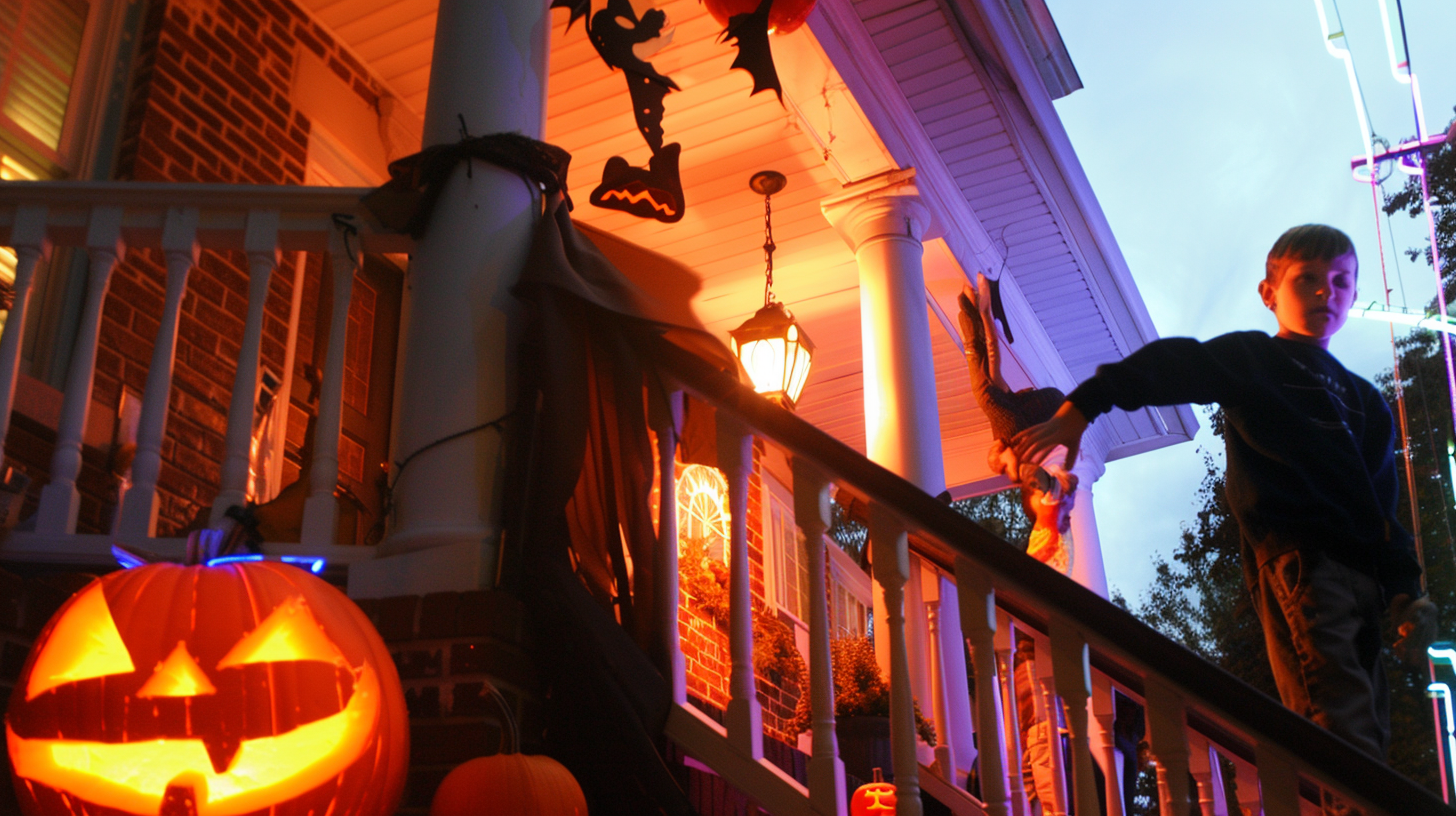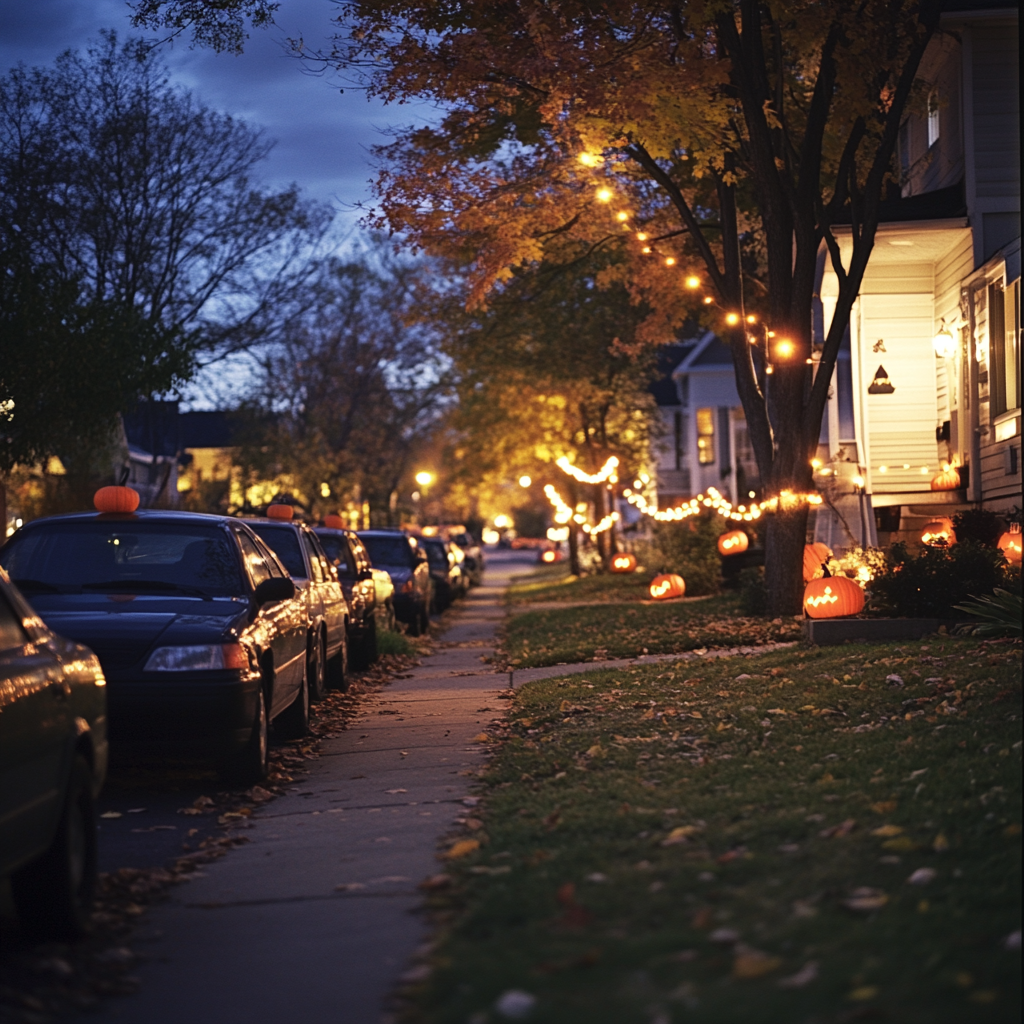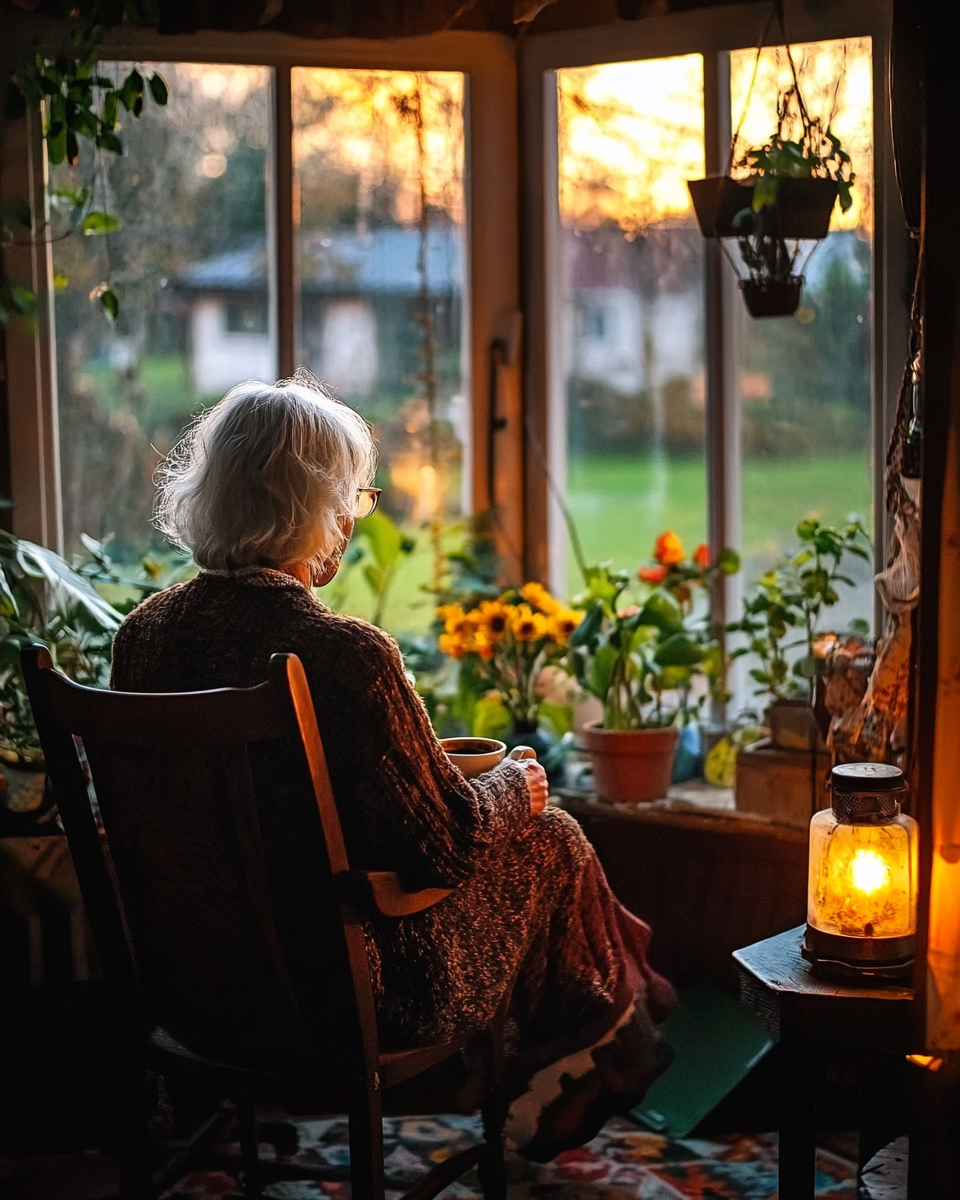In a quiet neighborhood, an elderly woman named Mrs. Jenkins lived alone. She had always been kind, but she never participated in holidays or decorated for Halloween. Her home remained dark and uninviting during the festivities, leading children to avoid her house. It wasn’t that Mrs. Jenkins didn’t enjoy the holidays, but since her husband passed away years ago, she had felt no reason to celebrate. Her isolation had become a habit, and Halloween, like many other holidays, passed without any notice.
One afternoon, a boy named Jacob moved into the neighborhood with his family. At 10 years old, he was energetic and curious, especially about his new surroundings. Jacob loved Halloween—the costumes, the candy, and most of all, the decorations. His family always went all out, turning their front yard into a spooky yet fun display every year. Jacob noticed that while many houses were festive, Mrs. Jenkins’ house stood bare, stark against the lively backdrop of the rest of the street. Unlike the other kids, who avoided the house due to its gloomy reputation, Jacob felt drawn to her. He had a strong belief that everyone should be able to experience the joy of Halloween, no matter their age.
A few days before Halloween, Jacob decided to visit Mrs. Jenkins. With a bag of mini pumpkins in hand, he knocked on her door, which took a while to open. Mrs. Jenkins, surprised to see a child at her doorstep, smiled softly but seemed unsure why he was there.

“Hi Mrs. Jenkins, I’m Jacob. I just moved here, and I noticed you don’t have any Halloween decorations,” he said, his voice full of innocence. “I thought maybe you’d like some help setting things up, so your house can be part of the fun!”
Mrs. Jenkins chuckled gently. “Oh, I haven’t put up decorations in a long time, Jacob. I guess I just don’t see much reason to anymore.”
Jacob frowned. “But Halloween is about fun, and everyone should feel included. I have some extra decorations at home, and if you don’t mind, I could help you decorate.”
Mrs. Jenkins hesitated but, seeing the sincerity in his eyes, decided to let the boy brighten her house. “All right,” she said softly. “Why not?”
The next day, Jacob returned with bags full of decorations—pumpkins, string lights, fake cobwebs, and even a few plastic skeletons. Mrs. Jenkins watched from her porch as Jacob enthusiastically transformed her front yard. With every decoration he put up, the house seemed to come alive. He even carved a few pumpkins with friendly faces instead of the usual scary ones, believing they matched Mrs. Jenkins’ gentle demeanor.

As the house transformed, something in Mrs. Jenkins shifted too. She hadn’t realized how much she had missed the excitement of Halloween or the simple joy that came with decorating. Seeing her once-quiet house now adorned with colorful decorations filled her heart with warmth she hadn’t felt in years.
The night before Halloween, Mrs. Jenkins decided to take part in the festivities. She baked cookies and bought bags of candy, ready for the trick-or-treaters. For the first time in what felt like an eternity, she eagerly anticipated the holiday.
When Halloween night arrived, children who once avoided Mrs. Jenkins’ house were now flocking to her door. They marveled at the decorations and were delighted when Mrs. Jenkins, dressed in a simple witch hat, greeted them with treats. Jacob, seeing the transformation he had helped bring about, beamed with pride as he trick-or-treated with his friends. Mrs. Jenkins’ house had gone from dark and lonely to one of the most welcoming homes on the street.

Later that evening, as things quieted down, Mrs. Jenkins called Jacob over. “Thank you, Jacob,” she said, her eyes twinkling with gratitude. “You’ve reminded me of the joy I’d forgotten. Halloween has always been such a happy time, and I almost missed it. You’re a wonderful boy.”
Jacob smiled. “Everyone deserves to celebrate, Mrs. Jenkins. I’m glad I could help.”
From that night on, Mrs. Jenkins never spent another Halloween in darkness. Each year, she and Jacob would work together to decorate her house, making it a fixture in the neighborhood’s celebrations. Through the simple act of decorating, Jacob not only brought joy to an elderly woman but also reminded the community of the importance of inclusion, connection, and shared traditions.